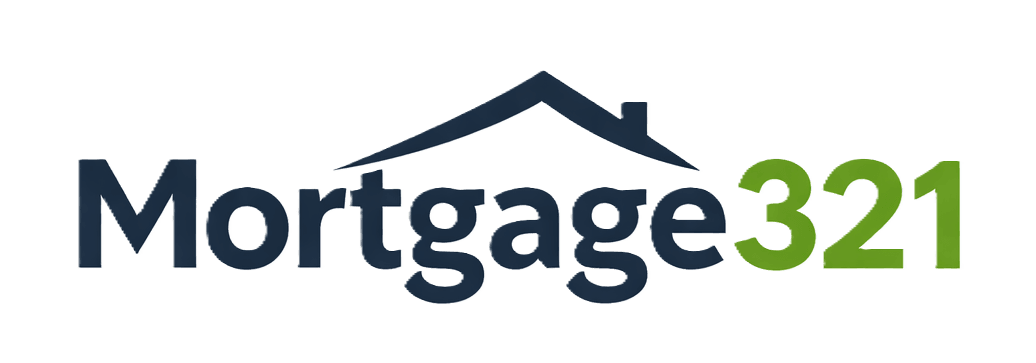The Risks of Relying on Automated Valuation Instead of Physical Mortgage Valuation
MP
As technology continues to transform the mortgage market, Automated Valuation Models (AVMs) are becoming increasingly popular among lenders. AVMs offer quick, data-driven estimates of a property's value, often enabling lenders to issue a mortgage offer without the need for a physical valuation. While this approach can save time and money, it also carries certain risks that both borrowers and lenders need to be aware of.
At Mortgage321, we believe it’s essential to consider both the benefits and potential pitfalls when dealing with AVMs. Below, we’ll outline the risks associated with a lender not requiring a physical mortgage valuation and relying solely on an AVM.
What Is an AVM?
An Automated Valuation Model uses algorithms and data from various sources—including property transactions, land registry data, and other market trends—to estimate the value of a property. While this can speed up the process of getting a mortgage offer, AVMs may not capture all the nuances of an individual property.
Risks of Relying on AVMs
1. Over- or Under-Valuation
An AVM may provide an inaccurate estimate due to the general nature of the data it relies on. Unlike physical valuations, where a professional visits the property, AVMs do not account for specific factors like the property’s current condition, any improvements made, or localised market conditions. As a result, the property could be over- or under-valued, affecting both the buyer and the lender.
An over-valuation could mean that the borrower is taking on more debt than the property is worth, increasing the risk of negative equity. Conversely, under-valuation may prevent a borrower from securing the loan they need, even if the property is worth more.
2. Lack of Detailed Inspection
A physical mortgage valuation not only assesses the market value of the property but can also identify potential structural issues, legal disputes (e.g., boundary problems), or issues with the land that may not be evident through an AVM. For example, problems like subsidence, damp, or unapproved modifications may go unnoticed if no physical inspection takes place. This could lead to unexpected repair costs for the buyer or reduce the property’s value in the future.
3. Inaccurate Comparables
AVMs are dependent on historical sales data, which might not reflect real-time market conditions. The comparables used by an AVM may not fully represent recent market shifts or specific trends in the neighbourhood where the property is located. If the AVM draws from outdated or irrelevant data, the estimated value could be skewed, resulting in an inaccurate mortgage offer.
4. Overlooking Unique Property Features
Certain properties, particularly older or unique homes, can be difficult to value accurately using an AVM. These models tend to favour properties that fall within standard parameters, making it harder for unconventional homes to be valued correctly. For self-employed individuals or those buying properties with non-standard construction or location, relying solely on an AVM could result in a mortgage offer that doesn't reflect the true value of the property.
5. Risk to the Borrower
If a lender relies on an AVM and the property turns out to be worth less than initially estimated, the borrower may face difficulties in the future. For instance, if they need to sell the property or remortgage, they could find themselves in a position where the outstanding mortgage exceeds the actual value of the property. This is especially risky in a volatile or declining market.
6. Potential Legal and Financial Implications for Lenders
Lenders may also face significant financial and legal implications if an AVM-based valuation turns out to be inaccurate. If a property was over-valued and the borrower defaults on the mortgage, the lender might struggle to recoup the full amount of the loan through a sale. Additionally, over-reliance on AVMs without sufficient checks could expose lenders to potential mis-selling claims or reputational damage.

When Are AVMs Useful?
It’s important to note that AVMs can be useful in certain situations. For properties in areas with a lot of comparable sales data or for low-risk lending cases (e.g., lower loan-to-value ratios), AVMs can speed up the mortgage process and reduce costs for both the lender and the borrower. However, these tools are most effective when combined with other valuation methods, especially in complex cases like self-employed mortgages, where factors outside standard models often come into play.
Conclusion: The Importance of Due Diligence
While AVMs offer a fast, convenient alternative to traditional valuations, the risks of bypassing a physical mortgage valuation should not be overlooked. For both borrowers and lenders, it is crucial to weigh the pros and cons carefully. In many cases, a physical inspection will provide the most accurate assessment of a property’s value, helping to avoid future financial pitfalls.
At Mortgage321, we advise our clients to consider all aspects of their mortgage application, especially when it comes to valuation methods. Whether you’re a first-time buyer or subsequent buyer, working with experienced mortgage brokers can help you navigate these risks and secure a mortgage that truly meets your needs.
For more information or to discuss your unique mortgage requirements, get in touch with our team at Mortgage321 today.
